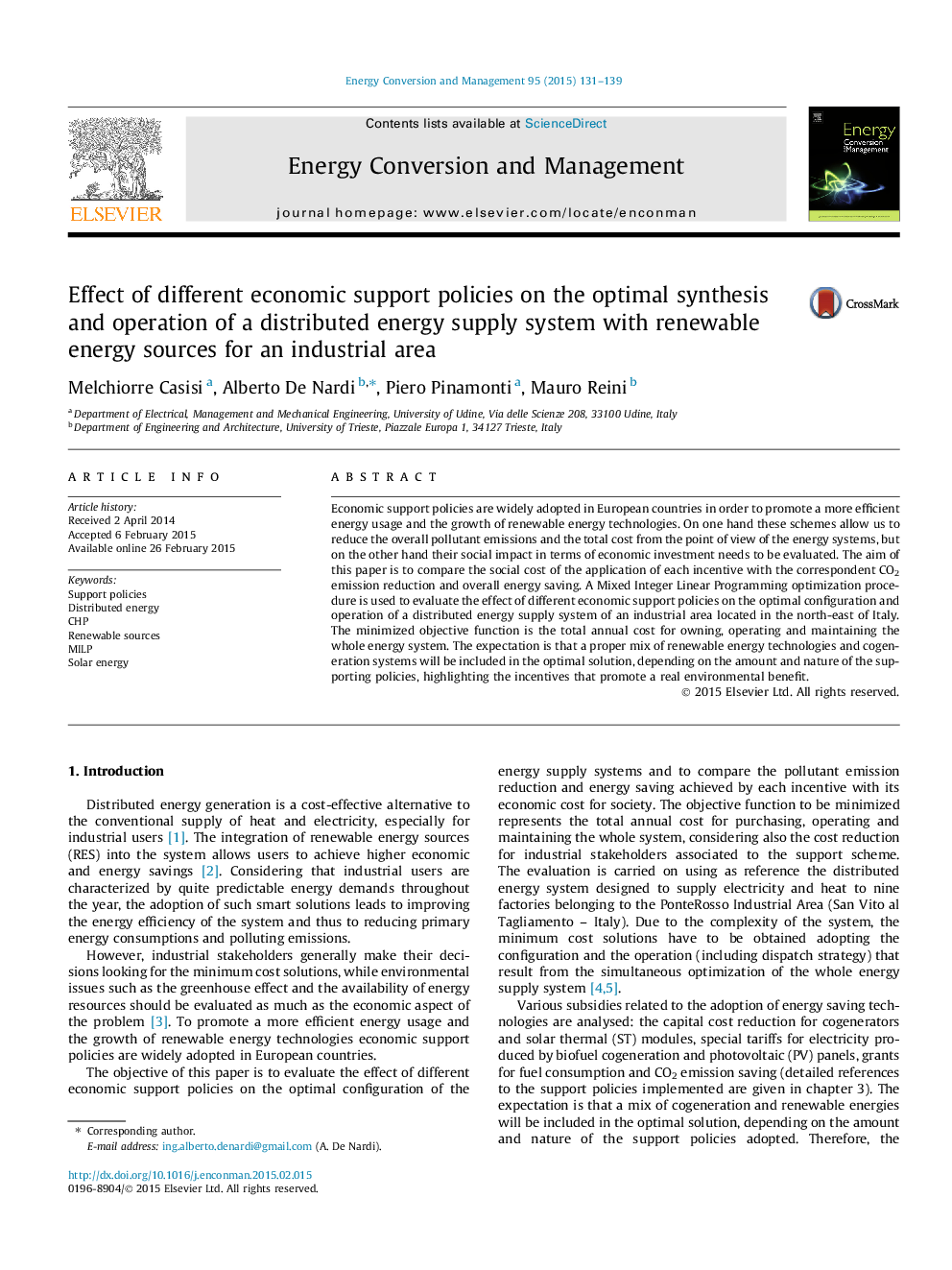| Article ID | Journal | Published Year | Pages | File Type |
|---|---|---|---|---|
| 765455 | Energy Conversion and Management | 2015 | 9 Pages |
•MILP model optimization identifies best structure and operation of an energy system.•Total cost of the system is minimized according to industrial stakeholders wills.•Effects of the adoption of economic support policies on the system are evaluated.•Social cost of incentives is comparted with correspondent CO2 emission reduction.•Support schemes that promote an actual environmental benefit are highlighted.
Economic support policies are widely adopted in European countries in order to promote a more efficient energy usage and the growth of renewable energy technologies. On one hand these schemes allow us to reduce the overall pollutant emissions and the total cost from the point of view of the energy systems, but on the other hand their social impact in terms of economic investment needs to be evaluated. The aim of this paper is to compare the social cost of the application of each incentive with the correspondent CO2 emission reduction and overall energy saving. A Mixed Integer Linear Programming optimization procedure is used to evaluate the effect of different economic support policies on the optimal configuration and operation of a distributed energy supply system of an industrial area located in the north-east of Italy. The minimized objective function is the total annual cost for owning, operating and maintaining the whole energy system. The expectation is that a proper mix of renewable energy technologies and cogeneration systems will be included in the optimal solution, depending on the amount and nature of the supporting policies, highlighting the incentives that promote a real environmental benefit.
